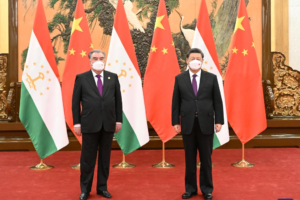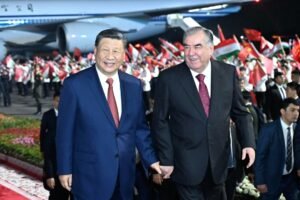On his recent trip to India and Vietnam, President Joe Biden declared that the United States had no intention “to contain China,” that America is “not looking to hurt China” and that “we are all better off if China does well.” Chinese reactions were muted.
But Beijing indeed sees U.S. efforts in the Indo-Pacific very differently from the president’s positive rhetoric. The U.S. policy of “strategic competition” with China is designed to contain the nation and limit its regional influence. China has been very vocal about that.
To an objective observer, China and the United States seem to exist in two parallel universes. Neither is connected. And what one says about its interests and aims, no matter how truthful and accurate, is lost in transmission.
The reason is the failure of different states and cultures to acquire sufficient knowledge and understanding of others. Many states and cultures, especially the United States, mistakenly believe that strategic logic in one region applies universally. Since the end of World War II, too many U.S. administrations believed that other states reasoned as we did or needed education to bring them to our level.
American interventions in Vietnam, Iraq and Afghanistan, in which the U.S. attempted to overlay some form of its democracy, proved catastrophic failures. The U.S. courting Vietnam five decades after that war ended is an ironic lesson on how much history can change.
From the U.S. perspective, the list of grievances of Chinese misbehavior and malign intentions is long and growing longer. Incidents such as flying spy balloons over America and harassing naval warships and aircraft in international waters and airspace are not just nuisances. Along with theft of intellectual property, establishing “police stations” inside America to monitor Chinese citizens and outright espionage are not actions friends take. And China seems to be unwilling to engage in serious dialogue on serious issues.
A combination of a massive military buildup and increasingly hostile statements directed against Taiwan, along with warnings about expediting “reunification” through a cross-strait invasion and territorial disputes, has become the central foundation for a U.S. defense strategy that seeks “to contain, deter and defeat” China if war arose. China is America’s leading and “pacing threat,” and Russia is a secondary threat. U.S. military priorities have shifted to the Indo-Pacific region.
At least one U.S. four-star general has told his command to prepare for a war with China that could come in just a few years as the U.S. had been strengthening alliances and relationships in the region. The trip to India and Vietnam underscored that. The U.S. has six mutual defense treaties or commitments in the region (Japan, Korea, Australia, New Zealand, the Philippines and Thailand); the Taiwan Relations Act and the Quad (U.S., Australia, India and Japan). The recently signed AUKUS agreement (Australia, United Kingdom, U.S.) will provide Australia with nuclear-powered submarines.
Finally and perhaps most significantly, Chinese economic policies are not transparent, fair or competitive. Its restrictions on foreign investment are one example. The Belt and Road Initiative and now the Global Security and Development Initiatives are attempts to change the international order in China’s favor. Its human rights abuses and strict control over Chinese residents’ behavior — including on the internet — are rejected by the U.S.
From a Chinese perspective, U.S. policies and actions, as well as increased U.S. military exercises in the region, freedom of navigation operations in the China seas and the visits of senior U.S. elected officials to Taiwan are regarded as destabilizing and hostile. China recognizes that members of Congress from both parties fear China as a major threat to the U.S. Sanctions, tariffs, limitations on technology and export controls under the guise of “small yard, high fence” are deeply offensive as well as economically crippling.
This has led China to substantially increase its nuclear and conventional forces with long-range missiles that can strike targets thousands of miles away and a more potent navy. The aim is to make another century of humiliation through foreign domination impossible. For the objective observer, the outlook for future U.S.-China relations is not good.
Are these divergent perceptions, interests and intentions reconcilable? Biden has sent a number of senior officials to Beijing to attempt to improve relations. That has not seemed to work.
Unless Biden and China’s Xi Jinping can reach a rapprochement as Richard Nixon and Mao Zedong did, both sides better hope the other does nothing stupid. That is not the best basis for a happy outcome.
Source : TheHill











